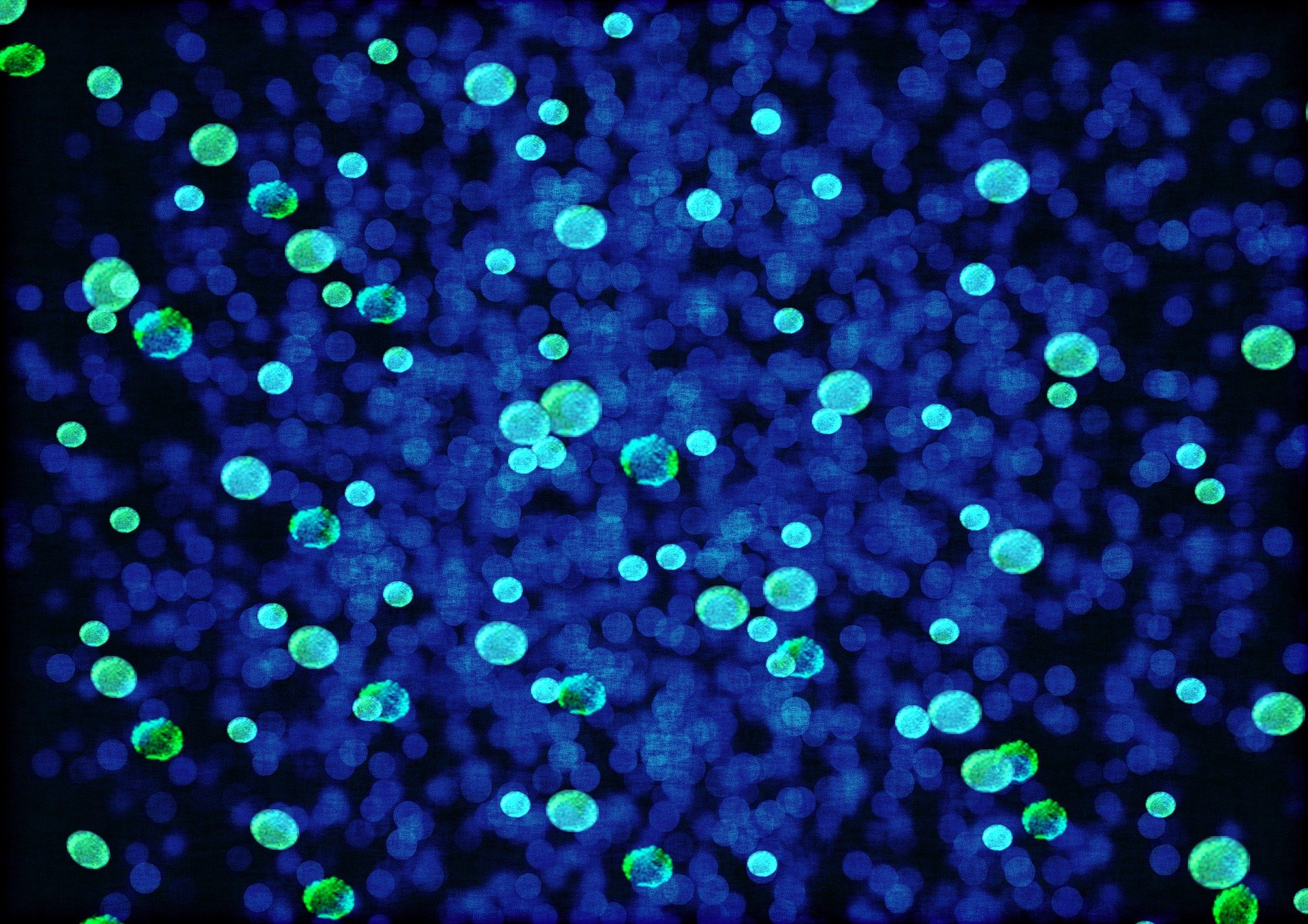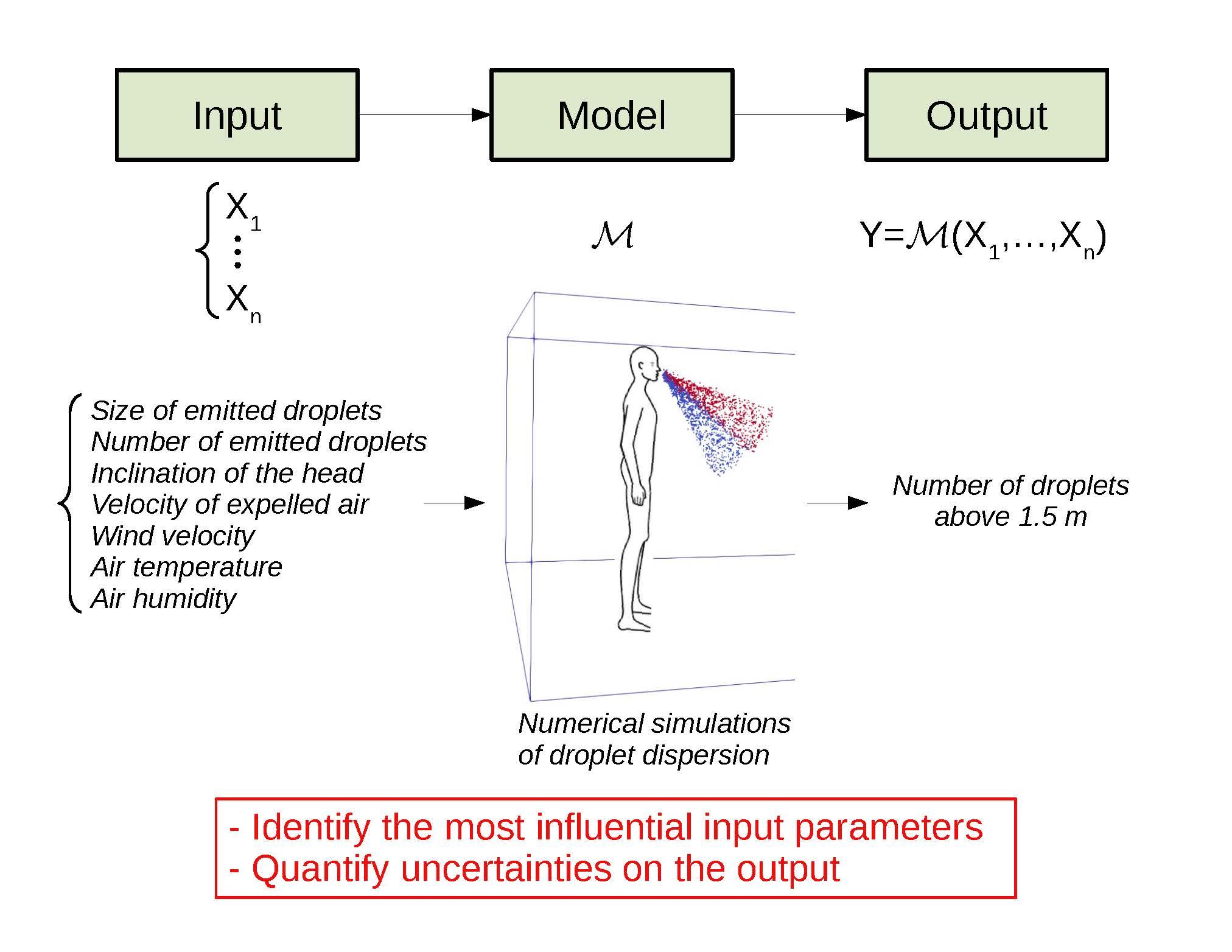Christophe Henry, researcher (Calisto team) and project leader, presents a brief outline of the project.

What is the genesis of your project?
Team CaliSto develops models and numerical methods for the simulation of multiphase flows, i.e. of a fluid (gas or liquid) in which particles are dispersed (solid objects with various shapes and sizes).
In March and April 2020, recent scientific communications related to the dispersion of human respiratory droplets in the air were analysed (these droplets being a potential pathway for virus transmission between individuals). The conclusions of these scientific studies were providing clues on possible social distancing measures. However, the results obtained in these studies were showing a wide range of safety distances between two individuals, which happened to depend strongly on the situation considered (person at rest or in motion, wind velocity, etc.). At this point, I made an analogy with the communication from Edgar Morin in the CNRS journal of April, 11th 2020 entitled: “Uncertainty is Intrinsic to the Human Condition”. Following this communication, it became clear to me that we should contribute to help the public to understand that Science is not “a repository of absolute truths and irrefutable assertions” (Edgar Morin) but rather “a human reality that, like democracy, is founded on the debating of ideas”.
We then chose to provide the public with tools to understand the variability in the social distancing measures that could be drawn from such numerical simulations. For that purpose, we resorted to the use of uncertainty quantification (UQ) and sensitivity analysis (SA) tools that we were setting up in the framework of a European project. Through dedicated meetings on Covid with other research teams within Inria, the project was further evolved thanks to the help of Céline Grandmont from Team Commedia and Hervé Guillard from Team Castor (who advised us to include partners from ONERA to benefit from their experience in the simulation of droplets). A proof-of-concept was built up and the project was submitted by the end of April 2020 to Inria’s Covid mission.
How is it developing today and what are its objectives?
Project leader: Christophe Henry (Team CaliSto)Partners Inria: Jérémie Bec, Mireille Bossy, Kerlyns Martinez-Rodriguez (Team CaliSto), Hervé Guillard (Team Castor), Céline Grandmont (Team Commedia)
Partners ONERA: Angelo Murrone, Nicolas Rutard (Multi-Physics Department for Energy)
Within 4-5 weeks, we were able to set up a methodology based on sensitivity analysis and uncertainty quantification tools to analyse data coming from numerical simulations. This methodology has also been validated on a demonstration case that consisted in a simulation of droplet dispersion in a quiescent flow without evaporation/condensation models.
We are currently working on setting up more realistic simulations.
For that purpose, we rely on data provided by our colleagues from ONERA, who have performed fine numerical simulations of the airflow expelled from a mouth in a quiescent ambient air (some parameters were fixed according to experimental observations such as the velocity of the expelled air, its angle of expulsion or the relative humidity). We are coupling these simulations of the fluid-phase to models for droplet dispersion and evaporation.
Following these promising results, we carry on our investigations with two main objectives:
- To improve the methodology used, especially to fine-tune the UQ & SA tools used (both to reduce the computational costs and to better incorporate the complexity and richness of the data).
- To enrich the data coming from numerical simulations available. The idea here is to be able to shed light on the impact of the model chosen for the simulation (a range of models are available for each phenomena, such as turbulence, droplet transport and droplet evaporation) as well as the impact of the numerical implementation of these models (various codes are available to solve such models, each code having its own structure). Due to the richness and complexity of this topic, we are eager to work with new partners that have an expertise in the emission and dispersion of human-respiratory droplets, especially if they can provide us with a set of data from numerical simulations (or even experiments) that can be analysed with such tools.
